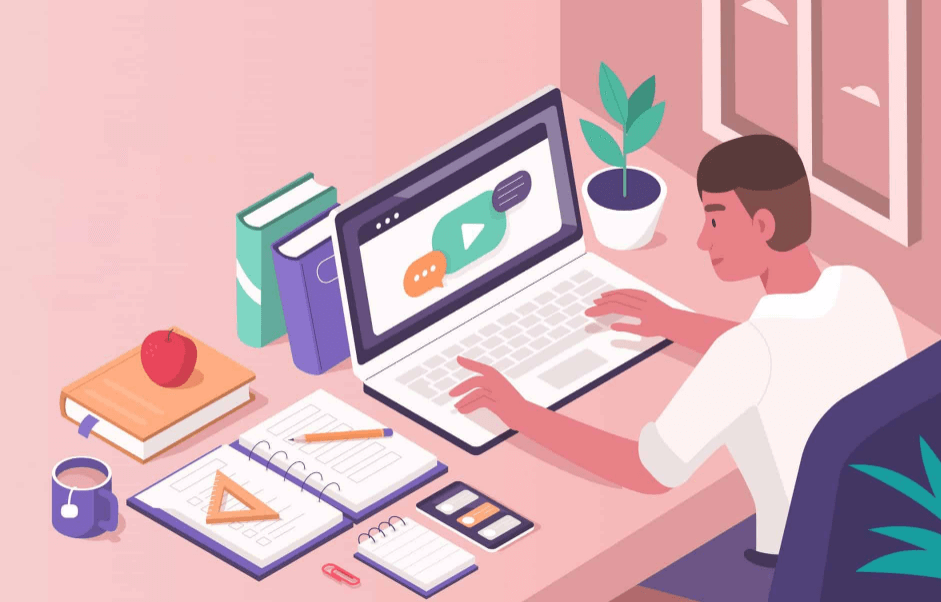The Evolution of Remote Learning
From Correspondence Courses to Digital Classrooms
The way we learn has transformed dramatically over the past few decades, but the biggest shift has come in recent years with the rise of remote learning. No longer bound by the confines of a traditional classroom, students today can access education from anywhere, at any time. This revolution in education, accelerated by advances in technology, is reshaping the way we think about learning. Let’s explore the evolution of remote learning and how it has come to dominate the educational landscape.
Early Beginnings: The Correspondence Course Era
Remote learning is not as new as it seems. Its origins date back to the 19th century with the introduction of correspondence courses. These courses allowed students to study by mail, receiving and submitting assignments through the postal system. Pioneered by institutions like the University of London in the 1850s, these courses gave people, especially those in remote locations, access to education that would otherwise be out of reach.
Though effective for the time, correspondence courses had significant limitations. The pace was slow, with weeks or months passing between lessons and feedback. There was no real-time interaction with instructors, and students often felt isolated in their learning journey.
The Shift to Radio and Television
The next major leap in remote learning came with the advent of radio and television broadcasting in the early to mid-20th century. Schools and universities began using these mediums to broadcast educational programs to a wider audience. In the U.S., for example, the National Educational Television (NET) network provided televised lectures to remote students.
This period marked a step forward in making education more accessible, as audio-visual learning became a part of students’ daily lives. However, it still lacked interactivity and real-time engagement, making it a passive learning experience for most.

The Rise of the Internet: A New Era of Online Learning
The advent of the internet in the 1990s completely revolutionized remote learning. Suddenly, educational institutions could create virtual classrooms where students from all over the world could participate in courses, interact with instructors, and collaborate with peers in real time.
Online courses became increasingly popular, with platforms like Blackboard and Moodle providing early learning management systems (LMS) that allowed for a more structured and interactive learning environment. Students could now access lecture materials, submit assignments, and receive instant feedback, transforming the learning experience from a passive to an active process.
During this time, distance learning was no longer a secondary option. Universities and training programs began offering fully accredited degrees online, providing the same level of recognition and rigor as traditional programs. As broadband internet became more widespread, the quality and variety of online learning materials improved, incorporating multimedia elements like videos, quizzes, and interactive exercises.
The MOOC Movement: Learning for Everyone
One of the most significant developments in the evolution of remote learning was the rise of Massive Open Online Courses (MOOCs) in the early 2010s. Platforms like Coursera, edX, and Udemy launched, offering thousands of courses from leading universities and institutions, often for free or at a fraction of the cost of traditional education.
MOOCs democratized education, making high-quality learning accessible to millions of people who couldn’t afford or attend traditional universities. While the completion rates for MOOCs were initially low, they introduced the concept of self-paced learning, allowing students to learn on their own terms. It also opened the doors to lifelong learning, enabling professionals to upskill or reskill without leaving their jobs.
Remote Learning in the Post-Pandemic World
While remote learning was steadily growing, the COVID-19 pandemic acted as a catalyst, pushing it into the mainstream. Almost overnight, schools, colleges, and universities around the world had to pivot to online learning to ensure continuity of education.
This sudden shift highlighted both the potential and the challenges of remote learning. On one hand, technology enabled millions of students to continue their studies from home, and educators found creative ways to engage learners through platforms like Zoom, Google Classroom, and Microsoft Teams.
On the other hand, the pandemic exposed issues of digital inequality, with many students lacking access to the necessary devices or internet connectivity. It also raised concerns about screen fatigue and the social aspects of learning, with students missing out on face-to-face interactions with peers and teachers.
The Future of Remote Learning
As we move forward, remote learning is set to become a permanent part of the education ecosystem. Here are some trends shaping its future:
- Hybrid Learning Models: Many institutions are adopting a blended approach, combining in-person and online learning. This offers the best of both worlds—allowing flexibility for students while still providing the benefits of classroom interaction.
- Personalized Learning: With advancements in artificial intelligence and data analytics, remote learning platforms are becoming more personalized. Students can now receive customized learning paths, allowing them to progress at their own pace and focus on areas where they need improvement.
- Virtual Reality (VR) and Augmented Reality (AR): These technologies have the potential to revolutionize remote learning by providing immersive, hands-on learning experiences. From virtual science labs to historical reenactments, VR and AR can make learning more interactive and engaging.
- Microlearning and Modular Education: The future of remote learning is moving towards bite-sized, on-demand learning. Instead of committing to lengthy courses, students can take short modules to quickly acquire specific skills or knowledge, making learning more flexible and adaptable to modern life.
A Learning Revolution
The evolution of remote learning has brought education to more people, in more places, and at more times than ever before. From correspondence courses to digital classrooms, each stage of its development has removed barriers and opened new opportunities. As technology continues to evolve, so too will the way we learn—making education more inclusive, accessible, and tailored to individual needs. Whether you’re a student, a professional, or simply a curious learner, the future of education is in your hands—wherever you may be.